The current landscape
In 2022, there were nearly 17,000 potential victims of modern slavery referred to the Home Office, representing a 33% increase on the previous year and the highest figure recorded since the National Referral Mechanism (NRM) began in 2009.
The sharp rise demonstrates the extent of the issue, but the true number of people being exploited in their search for work and sanctuary in the UK is likely to be much higher.
What is clear is that modern slavery and labour exploitation is on the increase across a multitude of sectors, including health and social care where the problem is becoming far more distinct.
“For years, the issue of modern slavery has very much been hidden in health and social care,” explains, Jane Bladon, partner and director at TylerBladon Practical Ethics. “It’s certainly not a new phenomenon, it’s just becoming far more visible in the sector.”
Modern slavery risks
Jane is an expert in compliance and ethics, helping businesses and organisations such as Tristone to take a robust approach to labour exploitation and modern slavery, whether that’s through the development of compliance frameworks, modern slavery systems management, or supply chain auditing.
“That’s where the biggest risk lies for companies,” explains Jane. “Using third parties to recruit overseas workers and insufficient due diligence checks along their supply chains.
“Tristone embraced the focus needed to scrutinise potential risk that come with using overseas links to source labour and were happy to work with Practical Ethics to check their recruitment routes and audit suppliers.”
Unlike Tristone, many companies are using sub-agencies that don’t have ethical practices in place, where cases of domestic servitude and people paying significant fees for work are commonplace.
“Sadly, cases are on the increase and it’s something that businesses need to be mindful of and they need to ask questions to the businesses that they work with. Identifying areas of weakness shouldn’t be used as a beating tool to ethically minded businesses, but an opportunity to improve and strengthen their processes to prevent exploitation,” says Jane.
Anti-Slavery Day is an important opportunity to raise awareness of the issues surrounding labour exploitation and modern slavery but, the reality is, it needs to be addressed 365 days of the year.
“Our advice is to raise awareness of modern slavery and how it can affect businesses, complete a risk assessment to identify any areas of weakness, and implement checks to identify indicators of labour exploitation, report and then prevent future occurrences. Protecting employees is something that should always be there, a steady heartbeat in organisations, not just a tick box exercise to appease,” explains Jane.
Tristone’s approach
At Tristone, the investor has put in place extensive recruitment and modern slavery practices that align with its overarching approach to ethics and culture. This includes working closely with local authorities in a joint effort to recruit from overseas; directly recruiting from overseas and making proper checks; and, where Tristone uses agencies, ensuring that they have full oversight of the supply chain of labour, to ensure that it is exploitation free.
Practical steps
In the last three years, Brexit may have altered policies and procedures around immigration and overseas workers, but the demands are still high for labour and the desire to work in the UK is as strong as ever.
In some instances, workers are knowingly paying fees to work in the UK but, in a significant number of cases, Brexit has driven exploitation and illegality underground. So, in a highly complex environment, what can health and social care businesses do to try and address the growing problem?
Jane advises:
- Firstly, make sure you understand what modern slavery is and how it affects your business at all levels, from those on the frontline recruiting to members of the board.
- Certain commercial organisations must publish an annual statement setting out the steps they take to prevent modern slavery in their business and their supply chains. This is a requirement under section 54 (Transparency in Supply Chains) of the Modern Slavery Act 2015.
- Embed modern slavery practices into the business, from carrying out a risk analysis of target territories and focus areas, to knowing what steps you need to take when an instance of exploitation arises and having a clear response plan in place, including knowing who to escalate and report cases to.
- Carry out thorough checks to ensure any worker has been fully informed about their rights, they have not paid a fee for that role, and they have not been unduly influenced by a third party.
- Keep abreast of practices in the workplace. Cases of exploitation can occur internally, so it’s essential to encourage an open culture and clear lines of communication to enable you to deal with complaints effectively,
- Engage proactively with authorities to understand what the key learnings are, so you can continually improve processes and procedures.
Jane says: “The key is to identify and manage potential hazards and mitigate the risks for the workers in your supply chain, while at the same time ensuring that you are actively looking after workers, and promoting workers’ rights.”
Picture credit: Liia Galimzianova


